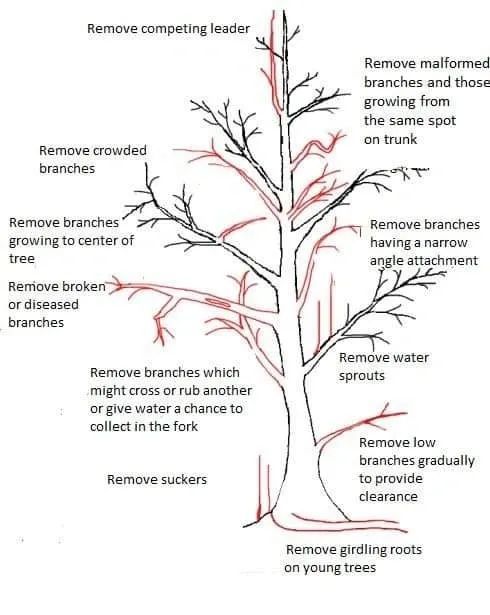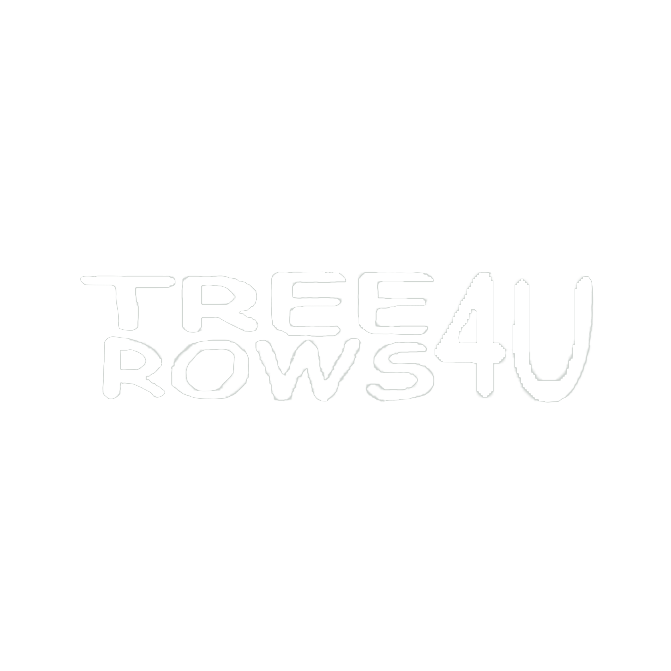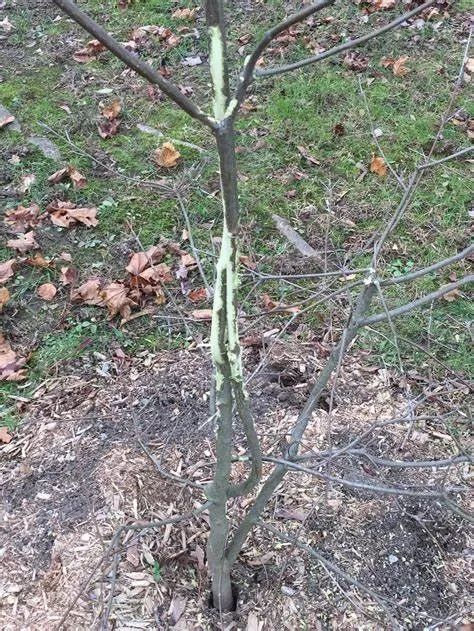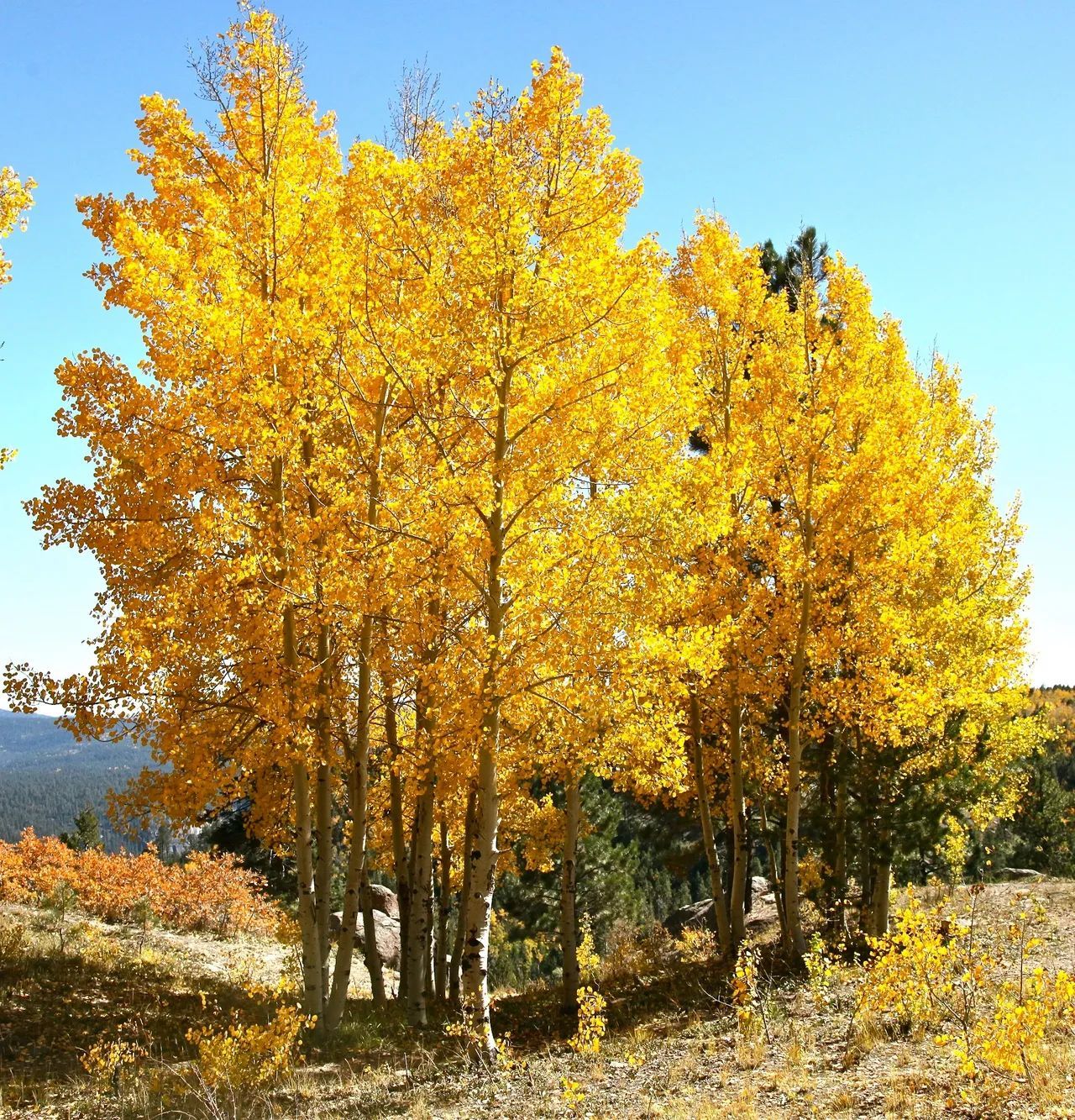How to Trim your North Dakota Trees for Bismarck Landscaping
February 19, 2024

You may not be thinking about Trees in Bismarck, North Dakota right now, but you should be. As a landscaper in Bismarck, North Dakote there is not much to do in the dead of winter. Trimming North Dakota shade trees and fruit trees in Bismarck is one thing that is best done this time of year.
Right now, is the perfect time to trim most of your deciduous North Dakota trees. Winter is the right time to trim trees in Bismarck, ND. There are a few exceptions. Some early flowering trees like Dogwood, should be pruned immediately after flowering. Some, like crabapple are susceptible to fireblight, and should be pruned during dormancy. Check with your local USDA forestry extension office if you are unsure.
There are a few primary reasons for trimming. Safety, Aesthetics, or Tree Health. Your reasons for trimming will guide what needs to be trimmed from the tree. Once you have determined which branches are to be trimmed, and which branches should remain it is time to get to work.
Before you get started, here are some tips on HOW to trim your North Dakota trees.
The general guidelines for fruit trees and shade trees in North Dakota are much the same. Reference the picture at the head of this article to help identify problem branches that should be removed. Start by inspecting around the root collar at the base of the tree. Look for roots that are circling the tree as these may girdle and choke the tree as it grows. Remove suckers that will compete with the tree for resources. Then move up the trunk and gradually remove lower branches to provide desired clearance under tree. This should be done in annual stages until the tree is tall enough to remove less than 25% of branches to provide desired clearance. After this is achieved, any new growth under this level should be removed to maintain this desired clearance.

Use the guide above for removal of large or small branches. Small branches may be removed in a single cut as there is little weight on them to cause damage during removal. Large branches must be removed in a more methodical approach. Start by making an undercut out just beyond the desired final cut. The undercut should penetrate over one third, but less than half of the thickness of the branch. The second cut is made on the top side, just out beyond the first undercut. Cut all the way through with this cut. The first undercut will prevent the second through cut from tearing the branch back further toward the trunk than desired. Should the branch begin to tear, it will tear only back to this point, and fall off. With the bulk of the weight removed, then the branch may be through cut back closer to the trunk. Be sure to stay out just beyond the collar (thick, sharp taper) of the branch. With little weight left to bend, break and cause damage this final cut may be made clean through the branch.
Broken or diseased branches should also be removed when pruning. These branches have little chance of growing strong or productive. They rob the rest of the tree of nutrients, and they may even cause damage to other parts of the tree by breaking or spreading disease. Crossing branches should be removed as they may become damaged or diseased, or damage other healthy desirable branches.
Water sprouts should be removed as they will not produce further strong attachments for branches and may grow to become crossing branches. Branches with narrow crotches (sharp angle up along main trunk), or branches that grow back toward the main trunk should be removed as they pose the same issues as water sprouts and crossing branches.
Malformed and multiple branches should be removed. They will not form strong attachments or produce further strong branching for expansion of the tree and are undesirable.
Finally, competing leaders should be removed. They can compete with the leader for space, and cause weakness in all of the leaders that may result in damage due to wind and weight further in the life of the tree. The form created by competing leaders is also not appealing and undesirable.
If along the way here you reach a point where you are no longer able to safely remove the undesirable branches, you may want to hire a professional tree trimmer. You should always hire a reputable and license arborist. There are many licensed arborists in Bismarck, ND. If you need help in contacting or selecting one, we can help. We work closely with arborists as we replace trees after they have removed diseased, damaged or otherwise undesirable trees. They also serve to treat, protect and maintain trees for our customers for many years after we have planted them.
If you need trees in Bismarck North Dakota or need some help in selecting North Dakota landscape trees Tree Rows 4 U has the answers and the trees. Please book a consultation with us, and we can help you grow.
Thank you for reading,
Recent Posts






